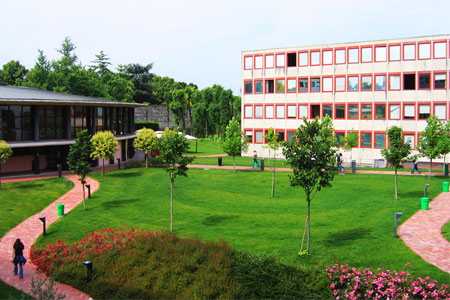Course not running

Lesson timetable
Go to lesson schedule
Learning outcomes
On completion of this course, students:
* should know contents of Spanish linguistics, in particular variational, in a synchronic and diachronic perspective;
* should be able to recognize and apply the treated aspects to the analysis of written texts or oral productions, also in the perspective of an application to the teaching of Spanish as a foreign language.
Furthermore, C2 language level of competence in Spanish (according to the Common European Framework of Reference for Languages) is also required.
Syllabus
Linguistic variation of Spanish and dictionaries
The course aims to train the student in the recognition of the linguistic varieties of current Spanish and in the knowledge of the different systems used by dictionaries to codify the variational characteristics of the language. With this, the student will acquire a wide panoramic of the variation of the Spanish from the dialectal perspectives (diatopic and diastratic variation) and of registry (diaphasic and diatechnic variation); Likewise, it will acquire the necessary skills to use dictionaries as a resource to extract information about the different linguistic varieties of Spanish. Finally, the last sessions of the course will be devoted to the teaching of variation in Spanish as a foreign language.
1. Concepts of linguistic norm and variation: language, dialect and idiolect; diachronic, diatopic, diastratic-diaphasic and diatechnic variation.
2. General aspects of the variation in Spanish.
3. Introduction to lexicographic resources of the dictionary: linguistic variation in dictionaries. The variation marks. The dictionaries of variants of Spanish.
5. Didactics of the variation in the teaching of Spanish as a foreign language.
Reference books
| Author |
Title |
Publisher |
Year |
ISBN |
Note |
| Cecilio Garriga Escribano |
«La microestructura del diccionario: las informaciones lexicográficas», Apartado 6. "Marcas". En Medina Guerra, Antonia (coord.), Lexicografía española, Barcelona, Ariel, pp. 115-119.
|
|
2003
|
|
|
| Francisco Moreno Fernández |
Las variedades de la lengua española y su enseñanza
|
Arco/Libros |
2010
|
|
|
| César Hernández Alonso |
«¿Qué norma enseñar?», en Instituto Cervantes (ed.), II Congreso Internacional de la Lengua Española: El español en la sociedad de la información. Sección II: Unidad y Diversidad del Español (Valladolid, 16-19 de octubre de 2001)
|
|
2001
|
|
http://cvc.cervantes.es/obref/congresos/valladolid/ponencias/unidad_diversidad_del_espanol/1_la_norma_hispanica/hernandez_c.htm |
Assessment methods and criteria
Assessment will consist of a written exam and it is s aimed at ascertaining the breadth and depth of the knowledge gained on the topics in the program, as well as the property of language, the terminological precision and the ability to connect the acquired knowledge in a systemic way.
The exam will focus on the program carried out during the lessons, on the didactic materials and on the bibliography of the course. The program, the bibliography and the examination procedures are the same for all students, including non-attending students.
LINGUISTIC COMPETENCE REQUIRED:
Level 5 (ALTE), C2 (Council of Europe).
Assessment of linguistic competence will be on the grounds of certificates issued by the CLA (the University Linguistic Centre) or by other accredited institutions (see “Students’ Manual”). Linguistic competence is propaedeutic.
Erasmus students are asked to contact the teacher.
In relation to the situation deriving from the Coronavirus emergency, the examination procedure indicated above is changed for the 2020 summer and fall sessions, in accordance with the indications of the University, in an oral interview via ZOOM on the topics and the bibliography of the teaching.
STUDENT MODULE EVALUATION - 2017/2018







